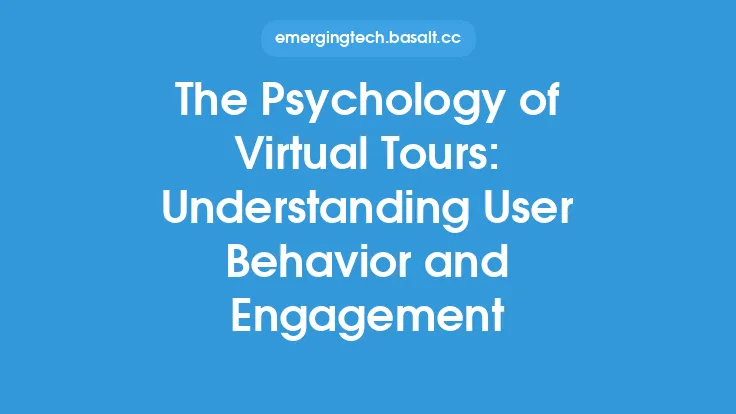The concept of virtual tours has been around for several decades, but it wasn't until the advent of modern technologies like 360-degree cameras, virtual reality (VR) headsets, and high-speed internet that this concept started to gain traction. Today, virtual tours have become an essential tool for people to explore and experience different parts of the world from the comfort of their own homes. This phenomenon has been driven by the increasing availability of high-quality virtual tour content, advancements in VR and augmented reality (AR) technologies, and the growing demand for immersive and interactive experiences.
History of Virtual Tours
The history of virtual tours dates back to the 1990s, when the first virtual tours were created using panoramic images and QuickTime VR (QTVR) technology. These early virtual tours were mostly used for real estate and tourism applications, allowing users to explore properties and destinations remotely. However, the quality and interactivity of these early virtual tours were limited, and it wasn't until the mid-2000s that virtual tours started to gain popularity with the advent of Google Street View and other online mapping services. Today, virtual tours are used in a wide range of applications, including education, cultural heritage, and entertainment.
Technical Requirements
Creating high-quality virtual tours requires a range of technical skills and equipment. One of the most critical components of a virtual tour is the 360-degree camera, which is used to capture panoramic images and videos. There are several types of 360-degree cameras available, including single-lens cameras, multi-lens cameras, and camera rigs. The choice of camera depends on the specific application and the desired level of quality. In addition to the camera, virtual tour creators also need to consider factors like lighting, sound, and editing software. Popular editing software for virtual tours includes Adobe Premiere Pro, Final Cut Pro, and Blender.
Types of Virtual Tours
There are several types of virtual tours, each with its own unique characteristics and applications. Some of the most common types of virtual tours include:
- Guided tours: These are virtual tours that are led by a guide or narrator, who provides commentary and context about the destination or location.
- Self-guided tours: These are virtual tours that allow users to explore a destination or location at their own pace, without a guide or narrator.
- Interactive tours: These are virtual tours that allow users to interact with the environment, using tools like hotspots, videos, and audio commentary.
- Immersive tours: These are virtual tours that use VR or AR technology to create a fully immersive experience, allowing users to feel like they are actually present in the destination or location.
Virtual Tour Platforms
There are several virtual tour platforms available, each with its own strengths and weaknesses. Some of the most popular virtual tour platforms include:
- Google Arts & Culture: This platform provides access to high-quality virtual tours of museums, cultural institutions, and historical sites from around the world.
- YouTube: This platform provides a wide range of virtual tours, including guided tours, self-guided tours, and interactive tours.
- Vimeo: This platform provides a range of virtual tours, including interactive tours and immersive tours.
- ThingLink: This platform provides a range of tools and features for creating interactive virtual tours, including hotspots, videos, and audio commentary.
Best Practices for Creating Virtual Tours
Creating high-quality virtual tours requires a range of skills and techniques. Some of the best practices for creating virtual tours include:
- Using high-quality 360-degree cameras and equipment
- Providing clear and concise commentary and context
- Using interactive tools like hotspots and videos to enhance the user experience
- Optimizing virtual tours for different devices and platforms
- Testing and refining virtual tours to ensure they are user-friendly and engaging
Conclusion
Virtual tours have come a long way since their inception in the 1990s. Today, they offer a wide range of benefits and applications, from education and cultural heritage to entertainment and tourism. By understanding the technical requirements, types of virtual tours, and best practices for creating virtual tours, individuals and organizations can create high-quality virtual tours that engage and inspire users. As VR and AR technologies continue to evolve, we can expect to see even more innovative and immersive virtual tours in the future. Whether you're a student, a traveler, or simply someone who loves to explore, virtual tours offer a unique and exciting way to experience the world from the comfort of your own home.





